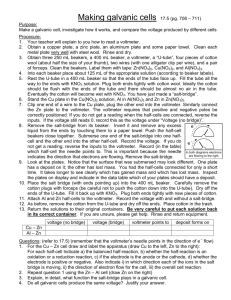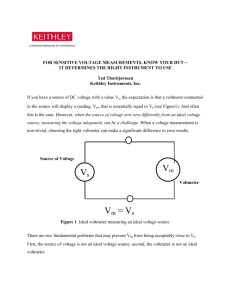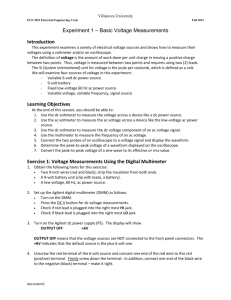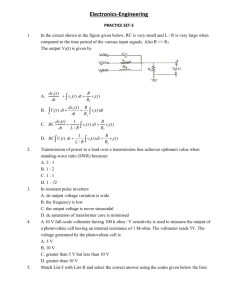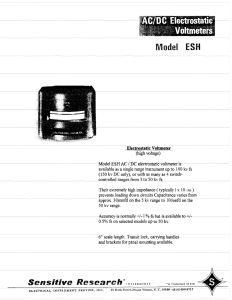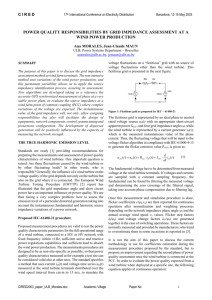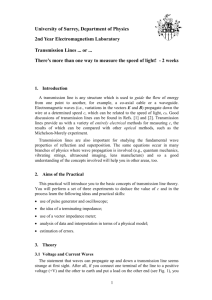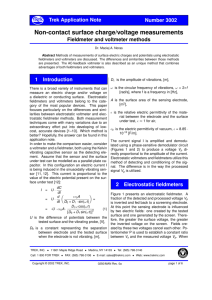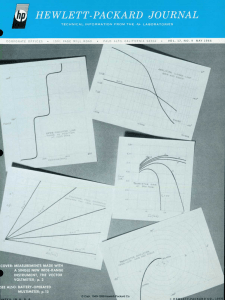Voltmeter measurements - Testing foil insulation in
advertisement
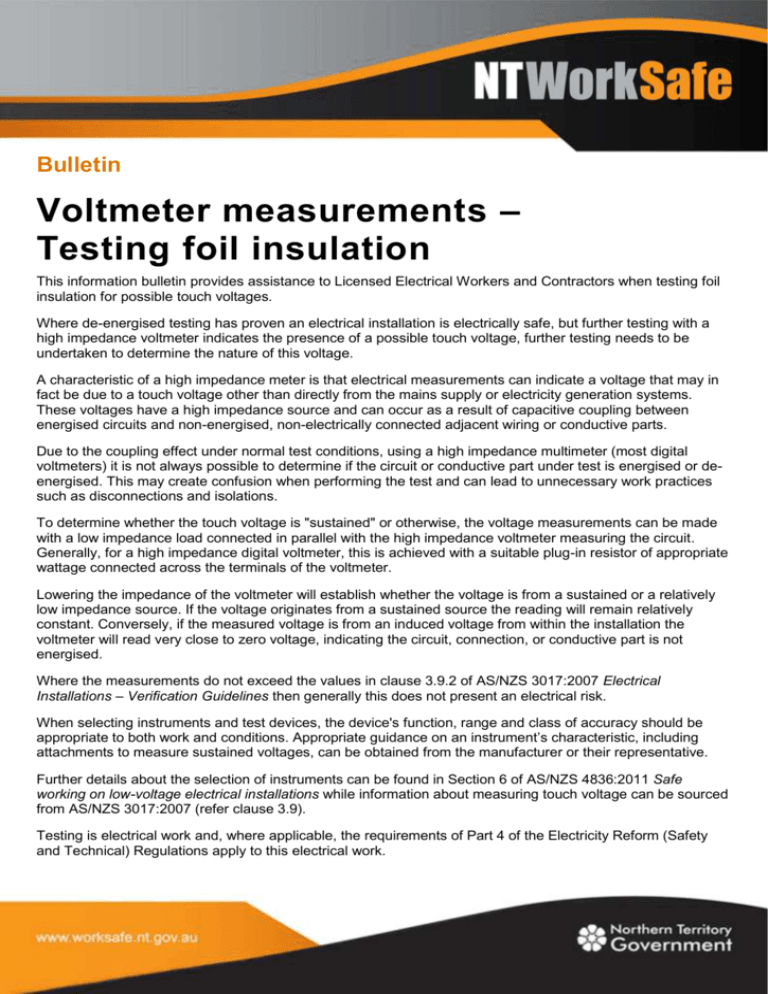
Bulletin Voltmeter measurements – Testing foil insulation This information bulletin provides assistance to Licensed Electrical Workers and Contractors when testing foil insulation for possible touch voltages. Where de-energised testing has proven an electrical installation is electrically safe, but further testing with a high impedance voltmeter indicates the presence of a possible touch voltage, further testing needs to be undertaken to determine the nature of this voltage. A characteristic of a high impedance meter is that electrical measurements can indicate a voltage that may in fact be due to a touch voltage other than directly from the mains supply or electricity generation systems. These voltages have a high impedance source and can occur as a result of capacitive coupling between energised circuits and non-energised, non-electrically connected adjacent wiring or conductive parts. Due to the coupling effect under normal test conditions, using a high impedance multimeter (most digital voltmeters) it is not always possible to determine if the circuit or conductive part under test is energised or deenergised. This may create confusion when performing the test and can lead to unnecessary work practices such as disconnections and isolations. To determine whether the touch voltage is "sustained" or otherwise, the voltage measurements can be made with a low impedance load connected in parallel with the high impedance voltmeter measuring the circuit. Generally, for a high impedance digital voltmeter, this is achieved with a suitable plug-in resistor of appropriate wattage connected across the terminals of the voltmeter. Lowering the impedance of the voltmeter will establish whether the voltage is from a sustained or a relatively low impedance source. If the voltage originates from a sustained source the reading will remain relatively constant. Conversely, if the measured voltage is from an induced voltage from within the installation the voltmeter will read very close to zero voltage, indicating the circuit, connection, or conductive part is not energised. Where the measurements do not exceed the values in clause 3.9.2 of AS/NZS 3017:2007 Electrical Installations – Verification Guidelines then generally this does not present an electrical risk. When selecting instruments and test devices, the device's function, range and class of accuracy should be appropriate to both work and conditions. Appropriate guidance on an instrument’s characteristic, including attachments to measure sustained voltages, can be obtained from the manufacturer or their representative. Further details about the selection of instruments can be found in Section 6 of AS/NZS 4836:2011 Safe working on low-voltage electrical installations while information about measuring touch voltage can be sourced from AS/NZS 3017:2007 (refer clause 3.9). Testing is electrical work and, where applicable, the requirements of Part 4 of the Electricity Reform (Safety and Technical) Regulations apply to this electrical work. Further information Information bulletin Ceiling Foil Insulation Risks to Licensed Electrical Workers Managing Foil Ceiling Insulation Risks – Householders and Tradespersons Installation of Thermal Insulation around Electrical Equipment and Accessories Safety Alert Incorrect Installation of Thermal Insulation around Electrical Equipment and Accessories Contact us For further information please contact us on 1800 019 115, facsimile (08) 8999 5141, via email at ntworksafe@nt.gov.au or go to the NT WorkSafe website at www.worksafe.nt.gov.au Disclaimer: This bulletin was originally produced by Electrical Safety Queensland. Reproduced here with permission. 2 Voltmeter measurements (V1.1 – 16 July 2012)
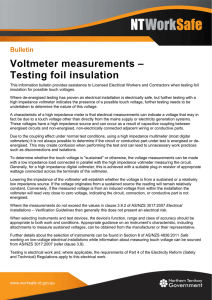





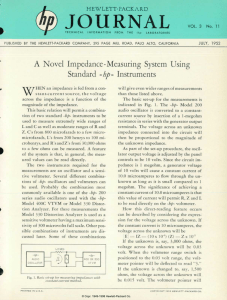
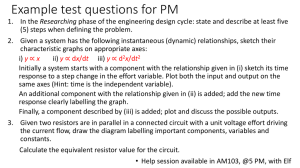




![[11]______ No. of printed pages :04](http://s3.studylib.net/store/data/008230456_1-c7f17f51a590100b54beedcacca16186-300x300.png)
